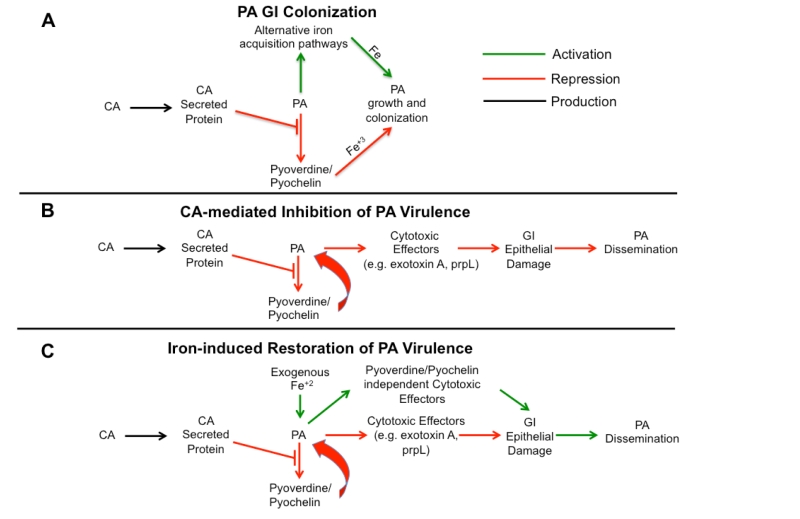FIGURE 2: Proposed mechanism of Candida albicans (CA) inhibition of Pseudomonas aeruginosa (PA) virulence in the gut. (A) PA gastrointestinal (GI) colonization. Despite inhibition of pyoverdine and pyochelin gene expression by CA, PA is able to colonize the murine GI tract, perhaps by utilizing alternative iron acquisition pathways (e.g. FeoABC system) that allow sustained growth and colonization of the gut. (B) CA-mediated Inhibition of PA Virulence. CA inhibits PA pyochelin and pyoverdine expression, most likely through a secreted protein. Production of PA extracellular virulence effectors, such as PrpL and exotoxin A, are decreased. Host gut epithelial integrity remains intact, and PA dissemination is prevented. (C) Iron-induced restoration of PA virulence. Iron supplementation in PA/CA co-colonized mice induces pyochelin-pyoverdine independent PA cytotoxic effector molecular production leading to increased gut permeability and mucosal barrier damage. PA can now disseminate from the gut.
By continuing to use the site, you agree to the use of cookies. more information
The cookie settings on this website are set to "allow cookies" to give you the best browsing experience possible. If you continue to use this website without changing your cookie settings or you click "Accept" below then you are consenting to this. Please refer to our "privacy statement" and our "terms of use" for further information.

